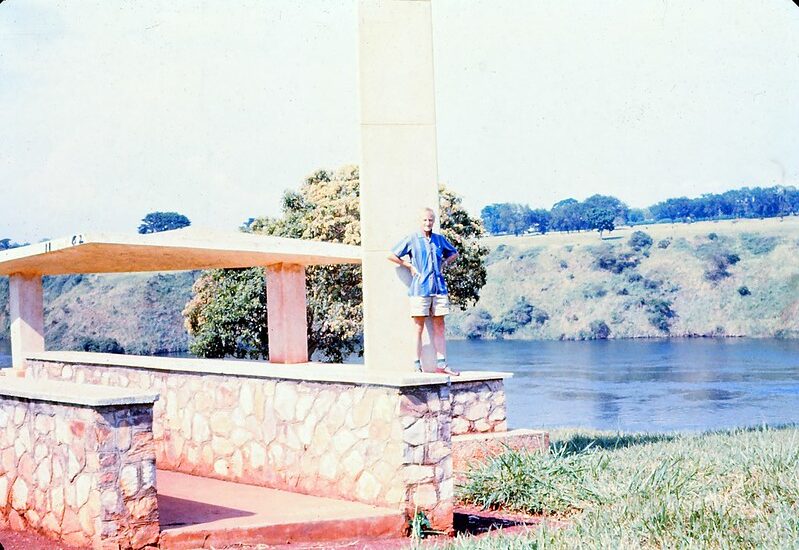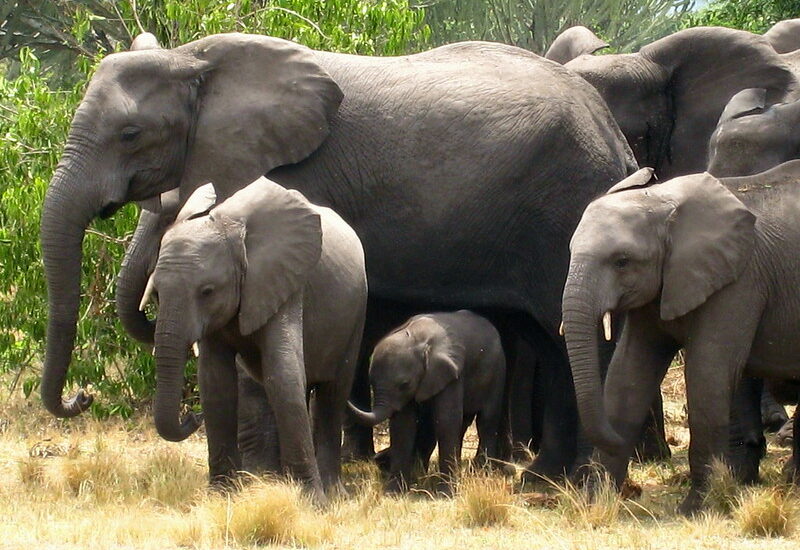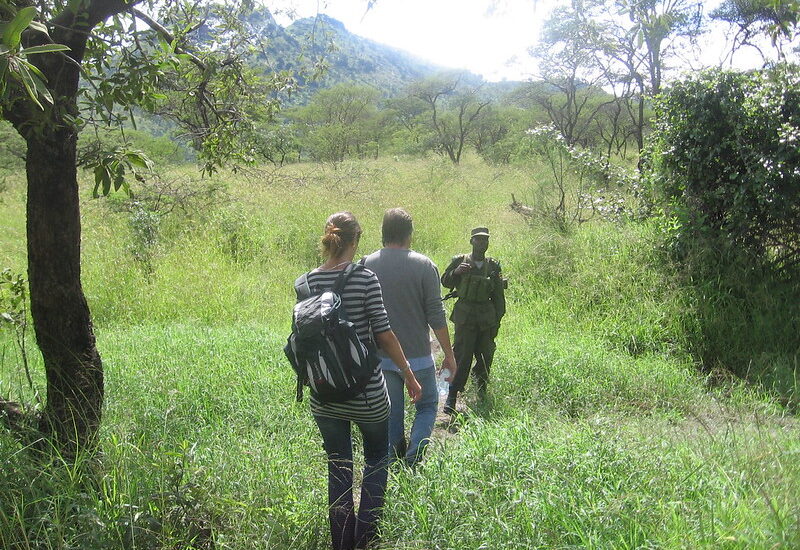Speke Memorial Monument in Jinja Uganda – Source of the Nile visit. Monument to Speke…
Gorilla tracking tours from Katuna Boarder Rwanda
Gorilla tracking tours from Katuna Boarder Rwanda- Bwindi impenetrable National Park.
Excursions to see gorillas beginning at the Katuna border It takes two hours to travel from Kigali, the capital of Rwanda, to Katuna, and another 1.5 hours to reach the Eastern Bwindi Impenetrable National Park, 2.5 hours to reach the Southern Bwindi Impenetrable National Park, and 3 hours to reach Mgahinga Gorilla National Park.
You can trek very cheap mountain gorillas in Uganda; the gorilla permit costs $800 per person per trek. Monumental Expeditions and Safaris arranges pick-ups for clients going on gorilla tracking experiences in Uganda. We can even pick you up from your place of residence in Kigali city and drop you back there at the end of your gorilla tour in Uganda.
Tours to see gorillas in Bwindi Impenetrable National Park departing from the Katuna border in Rwanda
Go on an unforgettable adventure with mountain gorillas in Bwindi Impenetrable National Park. Our all-inclusive, tailor-made gorilla trekking and wildlife safaris in Rwanda and Uganda are second to none.
Depending on the interests of each tourist, we include chimpanzee trekking, wildlife watching, mountain climbing, community tourism, white water rafting, and a plethora of other exciting activities alongside your gorilla trip. Our goal here at Adventure in the Wild Safaris is to make sure that your time in East Africa is absolutely unforgettable.
Inaccessible national park of Bwindi
Towards the southern tip of Uganda, on the outskirts of the Rift Valley, is Bwindi Impenetrable National Park. One of the most ancient and ecologically varied rainforests in Uganda, covering its mist-covered slopes, has been there for over 25,000 years and is home to around 400 plant species.
Notably, this “impenetrable forest” also serves as a sanctuary for around 400 mountain gorillas, which is equivalent to over half of the global population. Among them, there are many habituated groups that may be monitored.
An additional 120 mammalian species find refuge in this ecologically rich area. This includes a number of primate species including baboons and chimpanzees, in addition to elephants and antelopes. Among the 350 bird species that call this forest home are 23 that are unique to the Albertine Rift.
Buhoma and Nkuringo are two nearby towns that provide a wide variety of lodging options, including rustic bandas, affordable campgrounds, restaurants, artisan stands, and guide services. Numerous performances, seminars, and villas provide opportunities to learn about the Batwa and Bakiga Pygmy cultures.
The Bwindi Impenetrable National Park: Things to Do
Research on gorillas
In BINP, gorilla tracking may be done at four different sites: Buhoma, Ruhija, Rushaga, and Nkuringo. About 18 families call each of the four spots home as of the end of 2018. To go tracking, you must first purchase a tracking permit, which may be done via a reliable travel agency or by calling the reservations office at the Uganda Wildlife Authority (UWA) headquarters. Up to two years’ worth of permits may be pre-paid.
![]()
Participants must be at least 15 years old, and there is a daily cap of 8 guests permitted to see the gorillas for an hour. and while they’re among the gorillas, they’ll have UWA guides at their side.
Determining the duration of tracking the gorillas may range from a few hours to a whole day, dependent upon the distance covered by the group since it was seen nesting the night before.
Exploring the beauty of birds on a trip
There are 350 species of birds reported in Bwindi, Uganda’s oldest forest. Of these, 23 are endemic (meaning they are unique to the Albertine Rift), including the Blue-headed Sunbird and the Short-tailed Warbler. Seven of these species are classified on the IUCN Red Data list. Birds such as the Red-headed Bluebill, African Blue and White-tailed Blue Flycatchers, Common Bulbul, and African Emerald Cuckoo are easy to see.
Both nations share a forest that the Rushura Hill Walk traverses. The Rwenzori Mountains, the conical Virunga Volcanoes, and Lakes Edward and George may all be seen on clear days.
As you make your way around a hill on the 6-kilometer Muzubijiro Loop, you’ll see birds, primates, and the Virunga Mountains.
Around seven hours is required to complete the fourteen kilometers of the Ivi River Walk. The route goes through an area called Mukempunu, which translates to “a place of pigs” and is a common spot to see wild pigs.
The three to four hour Buhoma-Nkuringo Trail goes straight through the park, linking the two settlements and providing breathtaking views of the foggy hillsides as you make your way up to Nkuringo. Our driver will be waiting for you at the opposite end, so you can leave your bags with him. The Ivi River Walk includes this path as one of its segments.
The Habinyanja (Railegh) Trail is four to six hours long. Following its ford of the Munyaga River, it ascends the rather steep Habigorogoro and Riyovi Ridges, providing a vantage point over the Buhoma River.
Legend has it that this path leads to the fabled “African Corner,” so called because of a rock formation that resembles a map of Africa. After a challenging climb, experienced hikers may descend gently to the formidable Habinyanja marsh. Keep an eye out for a variety of birds along this walk, including Pel’s Fishing Owls, African Black Ducks, and Black Bee Eaters.
Cultural walks in Batwa
As part of the Batwa cultural experience experiment, visitors have the opportunity to explore the Nyamugali Pocket woodland, a conserved woodland that is home to a variety of animals and birds, including albertine endermic bird species, black and white Columbus monkeys, duikers, and more.
Animals from Bwindi Impenetrable Forest are unable to access this area because of the tea plantation that serves as a buffer zone between it and the national park. Join a Mutwa (pigmie) and an English translator for an authentic batwa experience in the forest. The pygmies will teach you about medicinal herbs, caves, traditional batwa huts, fire making, batwa behavior, forest views, tree species, beekeeping, batwa artifacts and utensils, nature walks in an impenetrable virgin forest, and much more.
Munyaga Waterfall and Fall Walk
In the Buhoma section of Bwindi Impenetrable National Park, where one may do gorilla trekking in the northern part of the park, one can find the Muyanga waterfalls. After inspiring their imaginations with the rare mountain gorillas, enthusiastic hikers may take a stroll or climb to these stunning waterfalls. On the way to the Muyanga waterfalls, you’ll cross rivers on log bridges and stroll through verdant jungle and partly bush trail.
Those who like hiking or just being outside on safari in Uganda will find that the 9-kilometer trek in Bwindi National Park is well worth the effort. The walks begin in the Buhoma region along the River Ivi Nkuringo route and are accompanied by trained park rangers.
You will be astounded by the breathtaking scenery as these three-tiered waterfalls plunge 33 meters below. Hikers also get to see amazing wildlife, including a wide variety of birds, monkeys, and plants, on their way to the Muyanga waterfalls.
Visit Bwindi Impenetrable National Park at the right time
January–February, June–July–August–September–December are the best months to go gorilla trekking. There are periods when it doesn’t rain at all or very little in certain places.
There is a huge demand for gorilla permits in the months of May and June, yet one visitor nonetheless choose those months for gorilla trekking. To arrange a gorilla tracking trip from the Rwandan border town of Katuna to the Bwindi Impenetrable National Park, get in touch with Monumental Expeditions and Safaris.


